Spotlight: A Heartful, Enterprising Journey
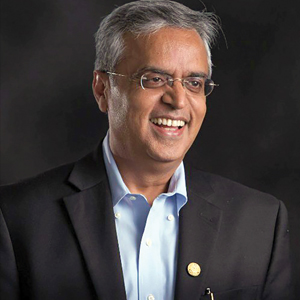
Sanjay Sehgal, Founder and CEO of MSys Technologies, a serial entrepreneur and angel investor, and a Heartfulness meditation teacher, is a glowing example of blending peak material success with an inner, spiritual journey.
If Sanjay Sehgal were to write an autobiography, he says he’d title it “The Monk Who Still Drives a Ferrari”—an apt description indeed for a man who is, at once, a tech multi-millionaire and a spiritual guide.
Sehgal is the founder and CEO of MSys Technologies, the latest of the many companies he has founded. With him at the helm, MSys has grown into a company with 12,000 employees spread across three countries.
Born and educated in Delhi, Sehgal was always an ace student—he ranked 18th in Delhi in his tenth-grade board exams. With 95 percent marks, he was at the top of the admission list at Delhi College of Engineering.
Sehgal’s American journey began in San Jose where he landed in 1990 while working for DCM Data Products, an Indian company. “I was part of a team that had designed one of the first 486 motherboards. Those days, that was as powerful as you could get.” He was sent to Atlanta by DCM to design motherboards for American Megatrends (AMI), the company that he eventually joined.
Those were the heady days of the data boom and Sehgal rode the crest of the tech wave—starting companies and selling them, finding gold in everything he touched.
There was a concurrent stream in Sehgal’s life—the journey inward. Just months after arriving in the U.S., he attended his first meditation session at a weekend retreat. That early, curious exploration went on to become a life-changing practice. Through the years since then, his Heartfulness meditation practice has been a wellspring of spiritual abundance, inspiring and informing every aspect of his life. A trained Heartfulness facilitator, Sehgal travels frequently to India to spend time with his extended family and is an important contributor to the local Atlanta community.
Sehgal shared his extraordinary story with Khabar over a generous, hourlong chat.
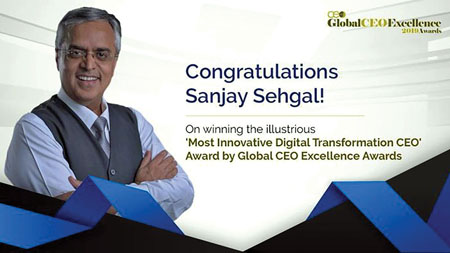
On his childhood and formative years
I was born in old Delhi in a lower-middle-class family. My parents and grandparents had migrated from Pakistan. We were part of a joint family where my grandparents and five of us were in the same two-bedroom apartment. It was nice growing up in that environment. My entire education, including college, was in Delhi. Till the time I moved to the U.S., I had never moved out, not even within India.
Sanjay Sehgal and his company, MSys Technologies, routinely bag some of the most prestigious awards in the world of business.
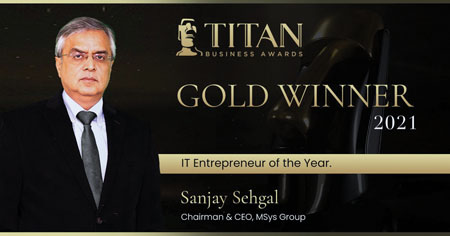
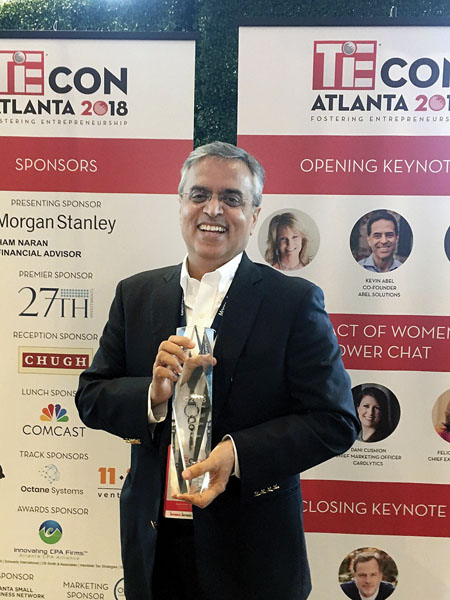
On his early days in the U.S—laying the foundation of a brilliant career
American Megatrends branched into [data] storage business, and I was fortunate enough to be part of that in 1993. We designed a unique product—Redundant Array of Independent Disk (RAID). After creating such a good product, we realized our traditional sales force at AMI was not able to sell it. They were used to selling BIOS and motherboards. For them, this RAID was very complex. So, I decided to try my hand at marketing and sales. Within three years, we moved the needle from zero to $180 million in sales. Those days, anybody who was designing servers was using our product. Dell and HP were our top clients.
On becoming an entrepreneur
We had some great success at AMI, and we wanted our CEO to take the company public. But for various reasons, it didn’t happen. Around 2000, I felt that if the company got sold to a larger company, then I’d be reporting to a big hierarchy. I didn’t want that. So, our VP of hardware engineering, Sukha Ghosh, and I left AMI and started our first venture—iVivity which offered storage networks and motherboards.
We had no knowledge of running a business. The closest to business knowledge I had was from my grandfather who used to have a brick kiln in Pakistan! He used to talk about that bhatta in Peshawar. Without any background in running a business, it was challenging. But we managed to raise our first round of venture financing on August 31, 2001—just eleven days before 9/11. We had a 30–35-member team at iVivity. We were fortunate that we had money in the bank already when 9/11 happened. Investors had stopped investing after that tragic attack.
We had many ups and downs. Fortunately, we did manage to raise $55 million over the course of the company. Eventually, iVivity was sold to Emulex which was based out of the west coast. Then I started Scentric, my next company—this time in software. I had had enough of hardware where turnaround is a lot longer, especially in chips.
Those days, the data boom was happening. We felt data life-cycle management would be a very good field to create some innovation in, and that’s what Scentric was all about. It was in the field of data classification. And that is something that people are still using in many ways. That was also a well-funded company and we sold that to Brocade. Later [after other ventures] I started MSys in India in 2008. I felt it was time to spend more time with my parents in India.
On MSys Technologies
We had felt that there was a real need for product engineering services. There were a lot of companies doing IT services or BPO or LPO, but product engineering—which is very much like building your own custom house—there were very few of those. We were offering such engineered products in technology, especially in the cloud and data storage fields.
It has been a good run. We have been growing at about 20 to 30 percent year-over-year ever since I stepped up my role as a full-time CEO in 2012 and bought out the other partners. We have expanded with offices in Vietnam, Bangalore, Pune and Chennai, besides the Atlanta headquarters. We acquire other companies that are complementary in nature to what we do.
I manage about 1000 people in India and a couple hundred in the U.S. But I only spend about two hours a day on the business—connecting with my executive team and their direct reports. The rest is spent on Heartfulness activities.
On being drawn to meditation
When I came to Atlanta in 1990, there were a lot of Indians where I was working. They were all wonderful people, very hardworking, very intelligent. But they all had the same kind of assembly line nature—work hard from Monday to Friday, go to Sam’s Club, the temple, the Indian store and potluck dinners on weekends. There is nothing wrong with it but being single, I used to feel nobody’s different. There was [a streak] of competition that everyone had—things like “I’m more intelligent than you!” I got tired of that.
But there was one person, Victor Kannan, in my office who was different. We would never talk about deals; we would talk generally about the journey of life. One day, I said to him, “You seem like you come from a different assembly line. I feel so calm sitting in your company.” He said, “Well, if you sit by a fire, you will feel warm. Maybe because I meditate.” Prior to that, I had never been exposed to meditation. I was one of those young Delhi boys, khana-peena-masti type guy! But I thought, well, we all know meditation is good, so let’s try.
I was not spiritually inclined at that time but when I went to their center for meditation, I could feel something, a perceptible lightness in me. You may call it fate which had taken me there. I always say that these things are by design. Our soul is like water— flowing. Water always flows in the direction of its destination. When you act on that feeling is up to you. We always have that free will.
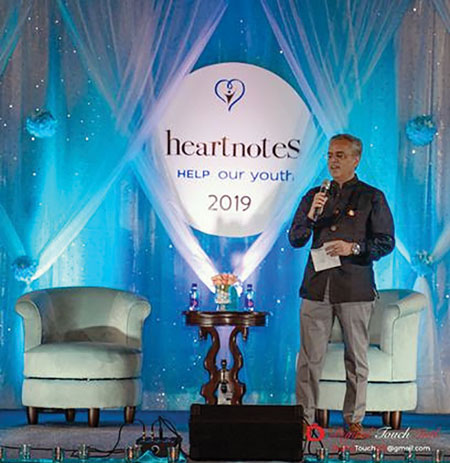 On the early experiences of spirituality
On the early experiences of spirituality
I decided to do introductory sessions. It was hard and challenging for a young mind which had all these other things going on. But I think if you hang in there, it is like the churning of milk to get butter. The butter comes all at once.
I moved in with some folks who were also meditating. Those initial six months were quite formative for my spiritual journey. When I see people starting late in life and they struggle, I feel fortunate that my entire journey—spiritual and material life —all grew together. So, for me, there is no life without spirituality.
Sehgal now devotes most of his time to Heartfulness, a global nonprofit organization that is changing lives through teaching meditation, while continuing to grow a thriving enterprise where he manages a team of 12,000!
On staying motivated towards the practice
I was single. I used to go to nightclubs, come home late, get up early in the morning—I was driving myself very hard. Then I thought, am I doing anything that makes me a better person, that enhances my quality as a human being? One thing which initially attracted me to this was the feeling that I am doing something to make myself a better person. So that gave me a feeling of looking forward to every day. And I can tell you that if there is one thing that has stayed with me even now, it is that I look forward to living every day.
On Chariji and Daaji, his mentors at Heartfulness
Both the masters that I have been associated with are the epitome of balanced existence. Chariji retired as an Executive Director of TTK Group of Industries. Daaji retired after handing down his flourishing business of pharmacy stores to his sons. Though he is not involved now, he always had this thing of working well with people. He would enable people to start pharmacies. Even in those days, he had 10 pharmacies in New York-New Jersey area. His management style influenced many of us.
On why Heartfulness is unique
I feel very strongly that what we do in Heartfulness—to help transform human beings—no one else can do. I love what Vibha does, I love what Akshaya Patra does, I support them every year. What Sewa does… I cannot do that. Everybody finds their niches, right?
You can feed them, you can find them jobs but you cannot make them better humans. To do that, you require a different kind of skill. Practices like Heartfulness make them better human beings. How do they deal with stress in a better way? These are intangible benefits because there is no paycheck. If you don’t have this, you will either pick up the gun and kill others or kill yourself. Sorry to say that, but it is happening everywhere, right?
On marriage and family
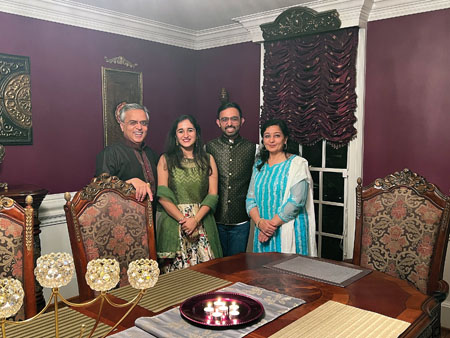
I married when I was 25 years old. Both of us were involved in Heartfulness. Our teacher in those days, Chariji, introduced us. My name is Sanjay, her name is Geeta. Referring to Mahabharata, Chariji said, Sanjay always recites the Gita. We met briefly and liked each other. We got married within 10-12 days of meeting each other. In many ways, it was an arranged marriage but there was no family involved. I would say it was spiritually arranged!
[Left] With his wife, son and daughter-in-law—all four of whom are Heartfulness trainers.
My son Suraj graduated from Georgia Tech a couple of years ago and joined Deloitte. Incidentally, Deloitte stationed him here at CDC in Atlanta. Now, he has got married and his wife has got admission at Emory. We are very fortunate that all four of us are Heartfulness trainers.
On providing spiritual guidance to those who seek his help
I would say it has gotten refined over time. Perhaps, in my earlier days, I was more into it—where others may [have felt] that I was trying to push them into doing this. But just recently, Daaji shared something very beautiful with me. He said that when you listen to others, it is humility; when you want others to listen to you, it’s your ego. If I think back and see the transition over time, more humility has come, as has the tendency to listen to others. In Heartfulness, we say that the sign of your spiritual growth is the increasing degree of humility in you. Eventually, you become so humble that you don’t need the door of the Lord to open because you have melted; just like in those old sci-fi movies, you actually melt through the door.
On embracing asceticism in future
The unique thing in Heartfulness is that there is an attitude of asceticism rather than the actual physical detachment. Vairagya is more of an attitude. Our founding master, Babuji, has written about this non-attached attachment. You are attached to things only to the extent that you perform your duty, whether it be your family, business, friends, family, everything. It’s like you realize at the deepest core of your existence, the transitory nature of everything around you, including yourself.
All our masters were married, had children, grandchildren. And it tells you that it is possible for you to be divine and yet be human. These are not mutually exclusive.
Viren Mayani is a senior contributor at Khabar with a wide repertoire of interviews with leading personalities in various fields such as sports, entertainment, business and more.
SanjaySpeak
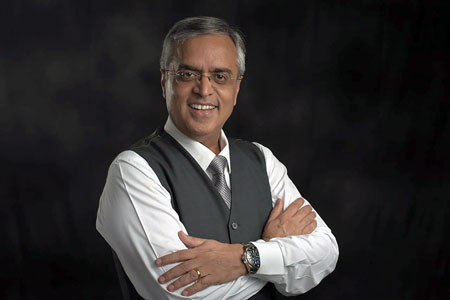
I don’t think entrepreneurialism means you have to start a company. It’s an attitude. To me, any independent thinker is entrepreneurial.
In everything I do, we say there is hardware, there is software, and there is vaporware. Even in my entrepreneurial journey, I said I am a master of vaporware. Things that don’t exist, I can talk about those!
When you are young and foolish, you only focus on your strengths, not on your weaknesses. As you gain more grey hair, you realize it is more important to know what you cannot do than what you can do. And then you can seek help.
I always surround myself with good management team members. At MSys Technologies, for a company of our size, we have some very good heavy-hitters in our management team. I have a COO who pretty much runs the show in India. I have a VP (Global Sales and Marketing) who runs the entire sales and marketing. There is a global VP (Engineering) and then more people in solution engineering.
I think many of us are running unnecessarily everywhere without having a good purpose— “headless chickens” as the common term goes. We need to take a pause because the gap between the stimulus and response is the biggest opportunity for growth. If we can learn to increase that gap, we will learn a lot and society can go a long way.
The Heartfulness Movement
Heartfulness is a meditation practice based on the ancient art of yogic transmission. It was founded by Shri Ram Chandra (1873 – 1931) of Fatehgarh, India. Its current leader is Shri Kamlesh D. Patel a.k.a. Daaji. Heartfulness centers offer free group and personal meditation training in 130 countries, or remotely via their Let’s Meditate app. Heartfulness is headquartered in a lush, 1400-acre campus at Kanha Shanti Vanam, Hyderabad (India).
Enjoyed reading Khabar magazine? Subscribe to Khabar and get a full digital copy of this Indian-American community magazine.
blog comments powered by Disqus










